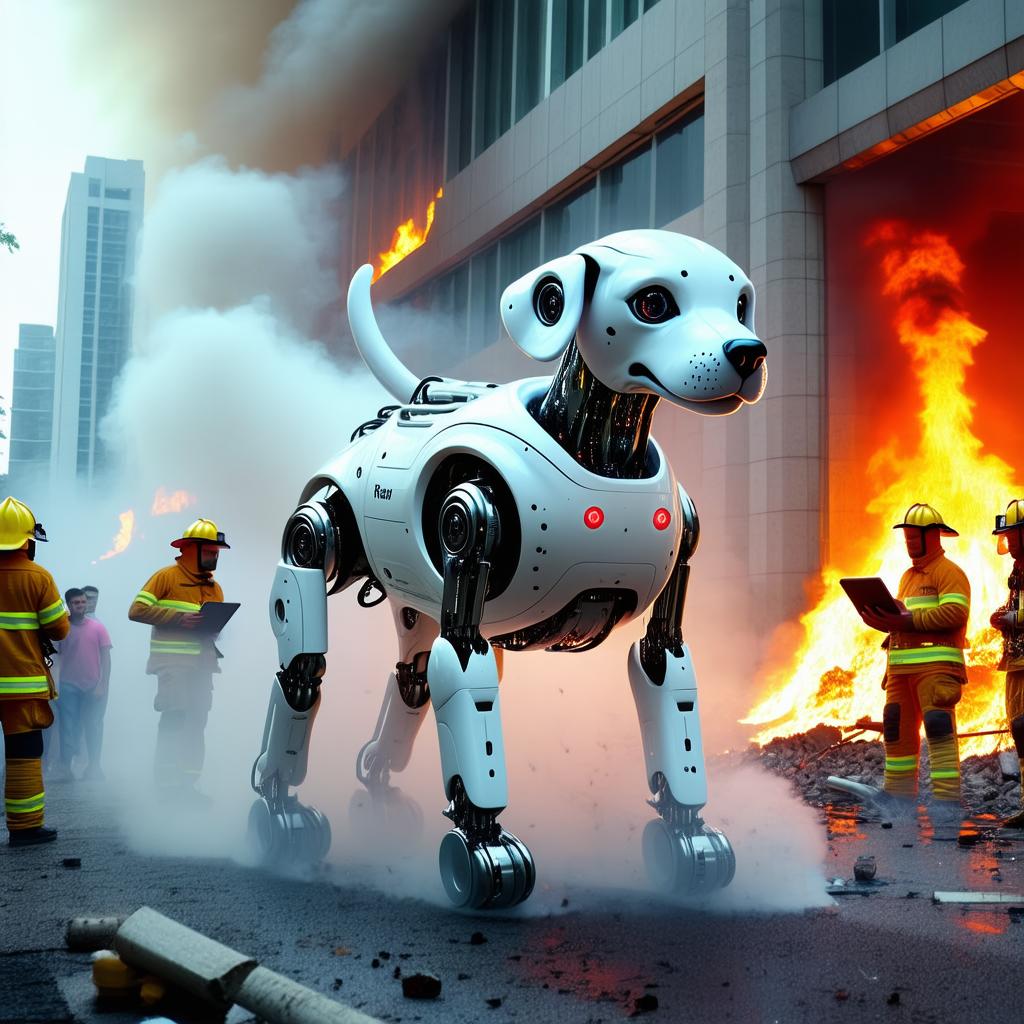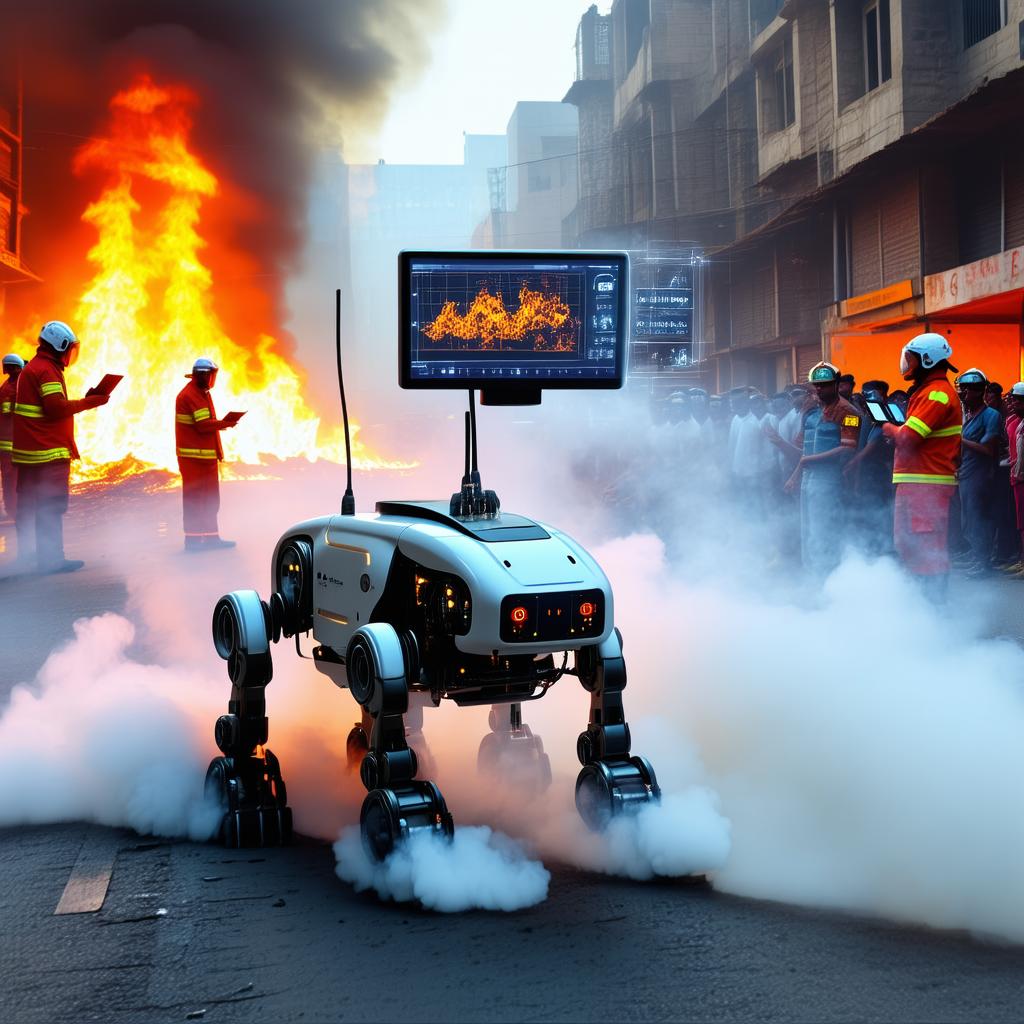Introduction
Firefighting is one of the most dangerous professions in the world, requiring immense courage, skill, and resilience. Despite advancements in fire safety and prevention, firefighters still face life-threatening situations daily. The introduction of cutting-edge technologies, including robotics and artificial intelligence, has significantly improved fire rescue operations worldwide. Recently, China deployed a homegrown quadruped “robot dog” for fire rescue in Changsha, demonstrating how robotics is transitioning from experimental labs to real-world applications. This development raises an important question: Can India leverage similar robotic technology to enhance its fire and emergency response capabilities?
This blog explores the potential of robotic fire rescue dogs in India, their applications, benefits, challenges, and the future of fire safety in the country.
The Need for Advanced Firefighting Technologies in India
Rising Fire Incidents and Safety Concerns
India has witnessed several devastating fire accidents in recent years, from high-rise building fires to industrial disasters. According to the National Crime Records Bureau (NCRB), fire-related incidents claim thousands of lives annually in India. Rapid urbanization, densely populated areas, and inadequate fire safety measures contribute to the severity of these accidents.
Traditional firefighting methods, while effective, often put firefighters in harm’s way. The introduction of robotic assistance could be a game-changer in tackling complex fire emergencies while minimizing risks to human personnel.
What Are Quadruped Robot Dogs?
Quadruped robot dogs are four-legged, AI-powered robotic machines capable of navigating challenging terrains, assisting in rescue missions, and performing automated tasks in hazardous environments. These robots are equipped with advanced sensors, cameras, and communication systems, enabling them to operate autonomously or via remote control.
The recently deployed X30 quadruped robot in China demonstrates the potential of such robots in firefighting. With capabilities like extreme temperature resistance, real-time mapping, gas detection, and autonomous navigation, these robots provide crucial support to rescue teams.
How Robot Dogs Can Revolutionize Firefighting in India

1. Enhanced Firefighter Safety
Firefighting often involves navigating through smoke-filled, unstable, and high-temperature environments. Robot dogs can be sent ahead of human firefighters to assess the situation, detect potential hazards, and relay critical data back to the control unit. This reduces the risk to human lives.
2. Real-Time Surveillance and Mapping
These robots can scan fire-affected areas in real-time using LiDAR (Light Detection and Ranging) and thermal imaging cameras. Their ability to create 3D maps of the environment helps firefighters strategize rescue operations more efficiently.
3. Detection of Hazardous Gases
Fires often release toxic gases like carbon monoxide, which pose a significant risk to both victims and rescuers. Equipped with gas sensors, robot dogs can detect and analyze air quality, alerting rescue teams about the presence of harmful substances.
4. Remote Control and Communication
Robot dogs allow for remote operation, enabling firefighters to control their movements from a safe distance. Additionally, they can serve as communication relays for trapped victims, improving coordination in emergency situations.
5. Extreme Temperature Endurance
Similar to the X30 robot used in China, firefighting robots in India could be designed to withstand temperatures ranging from -20°C to 55°C, ensuring they can operate in diverse environmental conditions.
6. Quick Battery Replacement and Extended Endurance
Modern robotic systems feature long battery life with quick replacement options. This ensures uninterrupted operation during extended rescue missions, increasing overall efficiency.
Potential Challenges in Implementing Robot Firefighters in India
While the benefits of robot dogs in firefighting are evident, implementing such advanced technology in India comes with its own set of challenges.
1. High Initial Costs
Developing and deploying quadruped firefighting robots requires substantial investment in research, manufacturing, and maintenance. Government and private sector collaboration would be essential to fund such initiatives.
2. Technical Adaptation and Training
Firefighters need specialized training to operate and integrate robot dogs into rescue operations effectively. A structured training program would be necessary to familiarize them with robotic controls and capabilities.
3. Urban and Rural Deployment Issues
While metropolitan cities like Mumbai, Delhi, and Bangalore could easily integrate robotic firefighting units, rural areas with limited technological infrastructure might face deployment challenges. Strategies would need to be developed for both urban and rural firefighting needs.
4. Policy and Regulatory Framework
For successful integration, India must establish regulations and safety guidelines for robotic firefighting systems. Government agencies, fire departments, and technology developers must collaborate to create a standardized framework for their usage.
Global Trends: How Other Countries Are Using Robotics in Firefighting
Apart from China, several other countries have already started using robotic technologies for fire safety:
- United States: The Los Angeles Fire Department uses robotic fire trucks to tackle hazardous fire incidents without endangering human firefighters.
- France: The Colossus firefighting robot was deployed during the Notre-Dame Cathedral fire in Paris to assist firefighters.
- Japan: Robotics have been integrated into fire rescue operations for earthquake-related fire incidents and industrial accidents.
India can learn from these global initiatives and tailor them to its unique firefighting challenges.
The Future of Firefighting in India: What Lies Ahead?
1. Development of Indigenous Firefighting Robots
With India’s growing focus on “Make in India,” domestic companies and startups could develop indigenous firefighting robots suited to Indian conditions. Collaboration with academic institutions and research centers could accelerate innovation.
2. Government and Private Sector Collaboration
Public-private partnerships (PPPs) could help fund and facilitate the integration of robotic technology into India’s fire departments. Government support through grants and incentives would encourage investment in this sector.
3. Pilot Programs and Testing
To assess the feasibility of robotic firefighting units, pilot projects in major cities should be conducted. These tests would help evaluate the performance and practicality of deploying robot dogs in real-life fire emergencies.
4. Integration with Smart City Initiatives
As India progresses towards smart cities, integrating robotic firefighting units with AI-driven surveillance and emergency response systems could significantly enhance urban fire safety.
Conclusion
Fire rescue robots, especially quadruped robot dogs, have the potential to revolutionize India’s firefighting industry by improving efficiency, reducing risks, and saving lives. While challenges exist, the benefits far outweigh the hurdles, making a strong case for India to explore and adopt this technology.
By leveraging cutting-edge robotics, India can build a safer future where advanced technology assists firefighters in their life-saving missions. As robotic innovations continue to evolve, the dream of safer, more effective fire rescue operations is no longer a distant vision but an achievable reality.
Courtesy: Internet
Disclaimer
This blog is for informational purposes only and does not constitute professional or legal advice. The information provided is based on research and publicly available data. Readers are encouraged to conduct their own research and consult relevant experts before making any decisions related to firefighting technology and robotic applications.
Read Also :
Oscars May Mandate AI Disclosure for Films Amid ‘The Brutalist’ and ‘Emilia Pérez’ Controversies
Drones, robot dogs debut in radiation accident emergency drill









+ There are no comments
Add yours